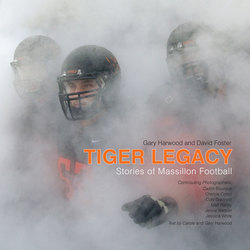Читать книгу Tiger Legacy - David Foster - Страница 6
На сайте Литреса книга снята с продажи.
ОглавлениеFOREWORD
Sport is pervasive in American society and is one of its more complex institutions. This complexity can be seen in sport itself and also in its association with other social institutions, such as family, religion, and economy. Just consider the number of statements we use in everyday conversation that derive from sport. From baseball there is the supportive phrase “Let’s take a seventh-inning stretch” to take a break from a task or meeting. Or, from basketball, when someone does something very well, it is a “slam dunk.” Mistakes are noted with comments such as “You dropped the ball” or “That was a weak pitch.” Most people understand these phrases as appropriate remarks tied to social situations.
Sport and other social institutions are linked through sports rituals. These rituals have been studied and commented on in many ways, ranging from academic courses such as examinations of the sociology of sport to mainstream films. For example, Kevin Costner’s Field of Dreams is about professional baseball, and Gene Hackman’s Hoosiers is about high school basketball in Indiana. In these movies, there are linkages to religion and rituals that deal with the theme of redemption. In Field of Dreams, it is redemption for the players who participated in the Black Sox scandal in 1919 and get to play baseball again on a brand-new field made for them. In Hoosiers, a coach with a past and a local drunk receive redemption when the small-town high school basketball team wins the state championship. In these films, sport provides alternatives to traditional redemptive religious rituals.
Tiger Legacy captures the complex relations and rituals that exist between sport and other institutions of American society through the microcosm of high school football. Each fall, usually on Friday nights, cities, towns, and villages in northeast Ohio come alive, Brigadoon-style, with the emergence of a high school football game.
In Tiger Legacy, Gary Harwood and David Foster and their collaborators tell the story of this Friday-night emergence of Massillon Washington High School football in Ohio. Using creative text and powerful photographs, they show how football, culture, and family come together in rituals to create important and meaningful experiences for the fans.
The stories depict Massillon football from cradle to grave. Orange footballs are placed in the bassinets of newborn boys in Massillon. As one mother noted, “It is a big thing for baby boys to receive a football in the bassinet.” Young boys learn about football at an early age from older players. One player wrote on his taped wrist, “Rest in Peace, Dad,” to honor his father, who had passed away shortly before his first game as a Tiger player. There are rituals directly linked to Massillon community life. Fans can participate in booster clubs, in bands, or by leading cheers.
One of the more important sets of rituals happens before the annual game with Canton McKinley, Massillon’s archrival. McKinley Week includes a variety of events, including pep rallies, appearances by Obie (the Tiger mascot), visiting elementary and middle schools in the Massillon community, decorating lockers, a prayer breakfast, and a parade.
The insights of Tiger Legacy, while about football in Massillon, Ohio, are generalizable to football cultures in other cities, towns, and villages. The authors of Tiger Legacy have captured the rituals of an important cultural event in American society—high school football.
— Jerry M. Lewis, PhD
Kent State University
Sport Sociologist
